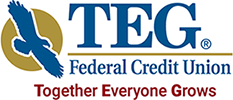Rising Interest Rates Make Personal Loans a Smart Choice
You’ve probably heard it on the news – the Federal Reserve will raise interest rates this year to help slow inflation. According to many economists, we could see up to six or seven rate hikes in 2022.
But what does this mean for you? Will you still be able to borrow money when you need it? And how can you prepare your finances so that you’re not paying too much interest on an existing credit card? We’ll explain all of these things and more now.
The Basics of Interest Rate Hikes
While they may sound alarming, interest rate hikes play an essential role in keeping the goods and services we consume affordable for us. The most recent Consumer Price Index, which measures the average change in time of prices rose 7.5% annually. You’ve probably noticed that many things you buy got a lot more expensive last year.
Without the Federal Reserve’s intervention, prices are expected to continue rising at a similar rate through 2022 and beyond. But when the Federal Reserve raises interest rates, borrowing becomes more expensive for everyone. From big corporations to individual consumers, and everyone in between, it will cost us all more to borrow money.
When it costs more to borrow, businesses and consumers save more than they spend. In turn, when spending drops, there’s less money circulating in the economy, so prices drop too. This is all thanks to the law of supply and demand.
Fortunately, with several interest rate hikes coming throughout 2022, we should see lower prices at the grocery store, gas station, and everywhere else we spend money. But the flip side is it will cost more to borrow money, especially with variable rate loan products like credit cards.
Fixed-Rate Personal Loans vs. Variable Rate Credit Cards
Variable-rate loan products have interest rates that usually change with the Federal Funds Rate, or the target interest rate set by the Federal Reserve. Most credit cards are variable loan products, as are adjustable rate mortgages (ARMs) and home equity lines of credit.
Your credit card’s APR might be 14% today. But each time the Federal Reserve raises the interest rate, that APR will also increase. Unfortunately, many consumers are unaware of this.
On the other hand, personal loans are a fixed-rate loan product, so the APR associated with the loan never changes. Therefore, the APR you agree to when you sign for your loan is the same APR you have the day you pay the loan off.
Moreover, personal loans usually come with a lower interest rate to start. According to data shared by the Federal Reserve in December of 2021, the average personal loan interest rate is about 9.34%, and the average credit card rate is 16.43%. Of course, those numbers will change as rates rise, but personal loans will still generally come with lower APRs than credit cards.
The Other Benefits of Personal Loans
We’ve established that personal loans are more affordable because their interest rates are lower. Their rates are more stable in a rising interest rate environment too. But that’s not all they have going for them.
Personal loans are unsecured loans, so you don’t need to offer up collateral to borrow with them like you might for a home equity or cash-out home refinance loan. That’s why you’ll often hear personal loans referred to as signature loans.
Personal loans are flexible too. You can use them any way you like. Members use them to consolidate debt, make home improvements, cover unexpected expenses, take memorable trips, get married, start side businesses, and so much more.
Shopping for a Personal Loan
As you can imagine, personal loans can vary quite a bit from loan to loan. Some loans are classified in the personal loan category but are slightly different from the standard installment loan we’ve discussed here.
For instance, a personal line of credit is another excellent loan product often classified as a personal loan product. But personal lines of credit have variable interest rates like credit cards. So they’re probably not the best choice right now for someone who wants to keep their cost of borrowing at its lowest.
Payday loans are also sometimes confused with personal loans, but they’re different. You can’t get a payday loan from a Credit Union or bank, and the interest rate associated with payday loans can be as high as 400%. This quality makes them a risky choice that we wouldn’t recommend.
As for what you should look for when shopping for a personal loan, start by evaluating their fees. Look for a loan without hidden charges, like application fees, processing fees, or prepayment penalties.
You also want a personal loan with flexible terms so you can have a monthly payment plan and interest rate that works for you. Usually, shorter-term personal loans come with slightly lower interest rates than longer-term loans. At the same time, shorter-term personal loans have larger monthly payments than do longer-term loans.
To find the monthly payment and interest rate that comfortably fits your budget, you can use this loan calculator.
Ready to Pay off Your Credit Card Debt With a Personal Loan?
With rising interest rates, it’s the perfect time to consider securing a personal loan to pay off any variable rate loan products you might have. Not only will you be able to lock in a lower interest rate with a personal loan, but you’ll also enjoy one single monthly payment that never changes.
Click the button below to learn more about our personal loans. Or contact us so we can talk to you about your options. We’re always here to help you achieve your financial goals.


